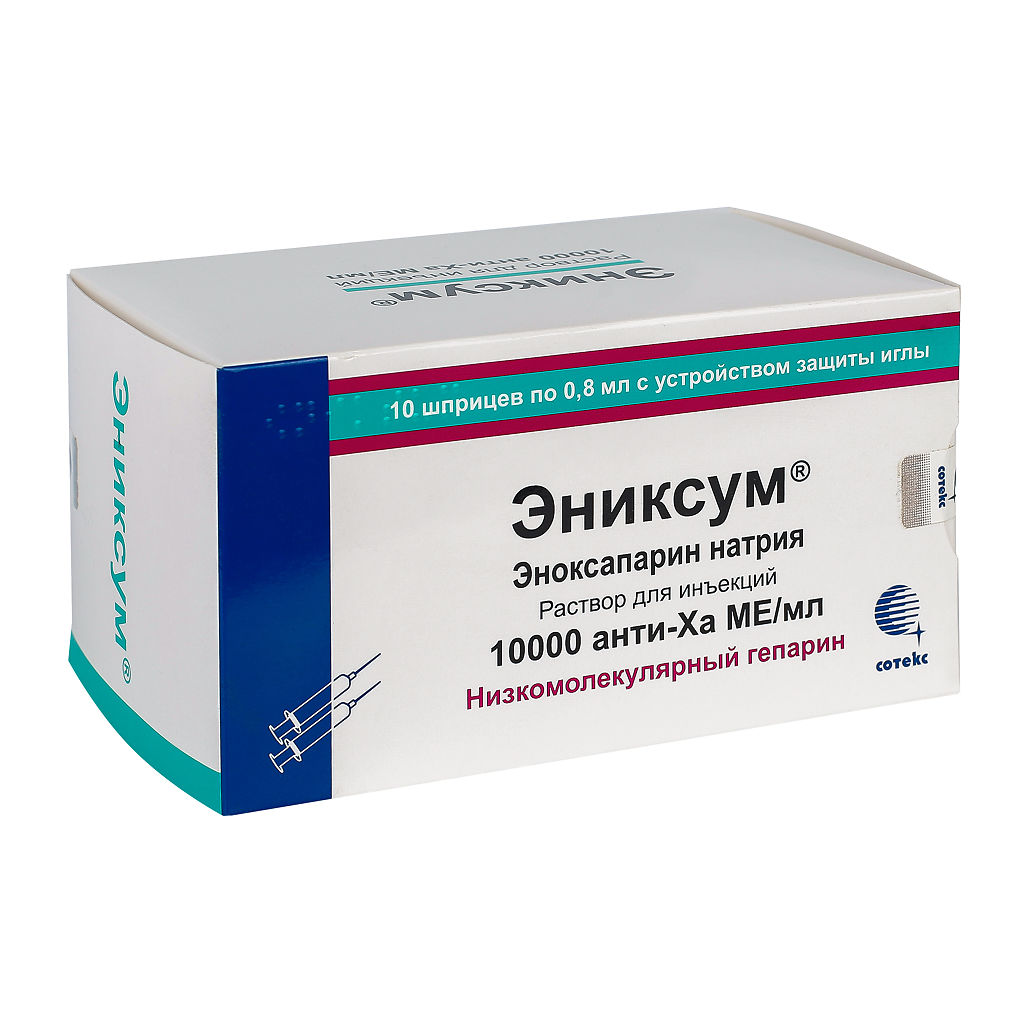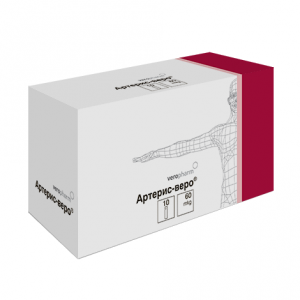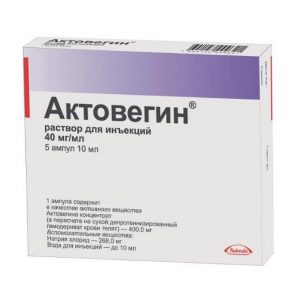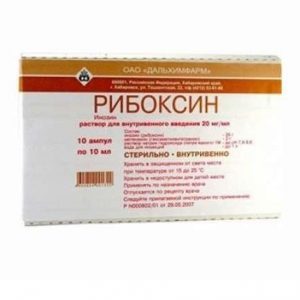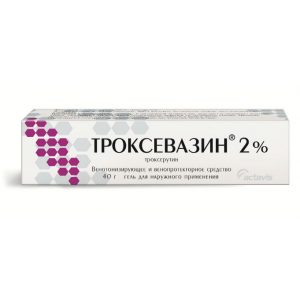Description
Pharmacological action of
Enoxaparin sodium – low molecular weight heparin. The average molecular weight is about 4,500 Da: less than 2,000 Da – <20%, from 2,000 to 8,000 Yes -> 68%, more than 8,000 Yes – <18%. Enoxaparin sodium is obtained by alkaline hydrolysis of heparin benzyl ester, isolated from the mucous membrane of the small intestine of a pig. Its structure is characterized by a non-reducing fragment of 2-O-sulfo-4-enpyrazinosuronic acid and a recovering fragment of 2-N, 6-O-disulfo-D-glucopyranoside. The structure of enoxaparin sodium contains about 20% (ranging from 15 to 25%) of the 1,6-anhydro derivative in the reducing fragment of the polysaccharide chain. In vitro enoxaparin sodium has high activity against coagulation factor Xa (anti-Xa activity of about 100 IU / ml) and low activity against coagulation factor IIa (anti-IIa or antithrombin activity of about 28 IU / ml). This anticoagulant activity is mediated by antithrombin III. In addition to anti-Xa / IIa activity, additional anticoagulant and anti-inflammatory properties of enoxaparin sodium as in humans were also revealed. and in animal models that include AT-III-dependent inhibition of other coagulation factors, such as factor VIIa, activation of the release of tissue factor pathway inhibitor, and a decrease in the release of von Willebrand factor from vascular endothelium into the bloodstream. These factors provide the anticoagulant effect of enoxaparin sodium in general. When used in prophylactic doses, enoxaparin sodium slightly alters the APTT, has virtually no effect on platelet aggregation and the degree of binding of fibrinogen to platelet receptors. Anti-IIa activity in plasma is about 10 times lower than anti-Xa activity. The average maximum anti-IIa activity is observed approximately 3-4 hours after sc administration and reaches 0.13 and 0.19 IU / ml after repeated administration of 1 mg / kg – with double administration and 1, 5 mg / kg – with a single administration, respectively. The average maximum anti-Xa plasma activity is observed 3-5 hours after sc administration of the drug and is approximately 0.2 0.4 1 and 1.3 anti-XA ME / ml after sc administration of 20, 40 mg and 1 and 1.5 mg / kg, respectively. Indications prophylaxis of venous thrombosis and embolism during surgical interventions, especially during orthopedic and general surgery prophylaxis of venous thrombosis and embolism in patients which is accompanied or not accompanied by pulmonary embolism prophylaxis of thrombosis in the extracorporeal circulatory system during hemodialysis (usually with a session lasting no more than 4 hours) treatment of unstable angina and myocardial infarction without Q wave in combination with acetylsalicylic myocardial sard ST segment in patients subject to medical treatment or subsequent percutaneous coronary intervention. Contraindications hypersensitivity to enoxaparin sodium, heparin or its derivatives, including other low molecular weight heparins active large bleeding, as well as conditions and diseases at which there is a high risk of bleeding – threatening abortion, cerebral vascular aneurysm or exfoliating aortic aneurysm (except in cases of surgical intervention for this) recent hemorrhagic stroke uncontrolled bleeding thrombocytopenia combined with a positive in vitro test for antiplatelet antibodies in the presence of enoxldaparin sodium 18 years (efficacy and safety not established) (see. “Special instructions”). With caution: conditions in which there is a potential risk of bleeding – hemostasis disorders (including hemophilia, thrombocytopenia, hypocoagulation, von Willebrand disease), severe vasculitis peptic ulcer of the stomach or duodenum or other erosive-ulcerative gastrointestinal lesions in the history of recent ischemic stroke uncontrolled severe arterial hypertension diabetic or hemorrhagic retinopathy recent diabetes mellitus recent or suspected neurological or ophthalmologic surgery spinal surgery ), spinal puncture (recently transferred) recent childbirth dokardit bacterial (acute or subacute) pericarditis or pericardial effusion kidney and / or liver failure intrauterine contraception severe injury (especially CNS), open wounds on large surfaces simultaneous administration of drugs, having an effect on the hemostasis system heparin-induced thrombocytopenia (history) in combination with or without thrombosis. There are no data on the clinical use of the drug in the following diseases: active tuberculosis, radiation therapy (recently transferred). Special instructions Nurofen ® for children can be used in children with diabetes, because the preparation does not contain sugar. impaired bowel and / or bladder function. The patient should be instructed to immediately inform the doctor if the above symptoms occur. If you suspect symptoms characteristic of a hematoma of the spinal cord, urgent diagnosis and treatment are necessary, including, if necessary, decompression of the spinal cord. Heparin-induced thrombocytopenia With extreme caution, Enixum ® should be used in patients with a history of heparin-induced thrombocytopenia in combination with or without thrombosis. The risk of developing heparin-induced thrombocytopenia may persist for several years. If a history of heparin-induced thrombocytopenia is suspected, Evaluation of these reports is limited due to the presence of competing factors contributing to the development of thrombosis of artificial heart valves, including the underlying disease, and due to insufficient clinical data. Pregnant women with mechanical artificial heart valves The use of enoxaparin sodium for the prevention of thrombosis in pregnant women with mechanical artificial heart valves is not well understood. In a clinical study in pregnant women with mechanical artificial heart valves when using enoxaparin sodium at a dose of 1 mg / kg 2 times a day to reduce the risk of thrombosis and embolism, 2 out of 8 women formed a thrombus, which led to blocking of the heart valves and death of the mother and fetus. There are separate post-marketing reports on heart valve thrombosis in pregnant women with mechanical artificial heart valves treated with sodium enoxaparin to prevent thrombosis. Pregnant women with mechanical artificial heart valves have a high risk of developing thrombosis and embolism. Laboratory tests At doses used to prevent thromboembolic complications, enoxaparin sodium does not significantly affect bleeding time and blood coagulation, as well as platelet aggregation or their binding to fibrinogen. With an increase in dose, APTT and activated blood coagulation time may be prolonged. The increase in APTT and activated clotting time is not directly linearly dependent on the increase in anticoagulant activity of the drug, therefore, there is no need to monitor them. Prevention of venous thrombosis and embolism in patients with acute therapeutic diseases who are in bed In the case of acute infection, acute rheumatic conditions, the prophylactic use of enoxaparin sodium is justified only if the above conditions are combined with one of the following risk factors: venous thrombosis years malignant neoplasms of thrombosis and embolism in the history of obesity hormone therapy heart failure chronic Kaya respiratory failure. Pediatric use Safety and efficacy of enoxaparin sodium in children under the age of 18 have not been established. Impact on the performance of potentially hazardous activities, requiring special attention and quick reactions. There is no data indicating a negative effect of enoxaparin sodium on the ability to drive vehicles and engage in other potentially dangerous activities that require an increased concentration of attention and speed of psychomotor reactions. Composition Active ingredient: enoxaparin sodium 8000 anti-Xa ME (80 mg) Excipient: water for injection – up to 0.8 ml Side effects Side effects were classified by frequency as follows: very often – 1/10 often – 1 / 100 ² <1/10 infrequently - 1 / 1000 ² <1/100 rarely - 1 / 10000 ² < 1/1000 is very rare - <1/10000. Bleeding: bleeding may occur, especially if there are concomitant risk factors ² organic changes with a tendency to bleed, age, renal failure, low body weight, and some drug combinations (see ² ÑInteraction ² Ñ). With the development of bleeding, it is necessary to cancel the administration of the drug, establish the cause of the bleeding and begin the appropriate therapy. Very often – bleeding in the prevention of venous thrombosis during surgery and in the treatment of deep vein thrombosis with or without thromboembolism often – bleeding in the prevention of venous thrombosis in patients on bed rest due to acute therapeutic diseases, and in the treatment of angina pectoris and myocardial infarction without Q wave and myocardial infarction with ST segment elevation infrequently – retroperitoneal bleeding and intracranial hemorrhage in patients treating deep vein thrombosis with sludge thromboembolism without it, as well as myocardial infarction with ST-segment elevation rarely – retroperitoneal bleeding in the prevention of venous thrombosis in surgical patients and in the treatment of angina and myocardial infarction without tooth Q. When using enoxaparin sodium against the background of spinal / epidural anesthesia and the postoperative use of penetrating catheters, rare cases of the formation of neuroaxial hematomas have been described, leading to neurological disorders of varying severity, including long-lasting or irreversible paralysis (see “Special instructions”). Thrombocytopenia and thrombocytosis: During the first days after the start of therapy, a mild transient asymptomatic thrombocytopenia may develop. Very often, thrombocytosis in the prevention of venous thrombosis during surgical interventions and the treatment of deep vein thrombosis with or without thromboembolism is often thrombocytopenia. In the prevention of venous thrombosis during surgical interventions and the treatment of deep vein thrombosis with or without thromboembolism, and also with myocardial infarction with ST segment elevation infrequently – thrombocytopenia in the prophylaxis of venous thrombosis in patients on bed rest and in the treatment of angina pectoris, myocardial infarction without Q wave is very rare – autoimmune thrombocytopenia with myocardial infarction with ST segment elevation. In rare cases, the development of autoimmune thrombocytopenia in combination with thrombosis has been reported. In some of them, thrombosis was complicated by organ infarction or limb ischemia (see “Special Instructions”). Other: very often – increased activity of hepatic transaminases often – allergic reactions, urticaria, itching, redness of the skin, hematoma and pain at the injection site infrequently – skin (bullous rashes), inflammatory reaction at the injection site, skin necrosis at the injection site rarely – anaphylactic and anaphylactoid reactions, hyperkalemia Skin necrosis may develop at the injection site, preceded by the appearance of purpura or erythematous painful papules. In these cases, drug therapy should be discontinued. The formation of solid inflammatory nodules-infiltrates at the injection site of the drug is possible, which disappear after a few days and are not grounds for drug withdrawal. Overdose Symptoms: hemorrhagic complications in case of accidental overdose with s / c administration of enoxaparin sodium. When ingesting even large doses, absorption of the drug is unlikely. Treatment: neutralize the effect of enoxaparin sodium by slow iv administration of protamine sulfate (or hydrochloride). Before using protamine sulfate, due to the possibility of side effects (in particular anaphylactic shock), it is necessary to carefully weigh the benefit / risk ratio. 1 mg of protamine sulfate neutralizes the anticoagulant effect of 1 mg of enoxaparin sodium if the drug was administered no more than 8 hours before the administration of protamine sulfate. 0.5 mg protamine sulfate neutralizes the anticoagulant effect of 1 mg enoxaparin sodium if it was administered more than 8 hours ago or if a second dose of protamine sulfate is needed. If, however, 12 hours or more have passed after the administration of enoxaparin sodium, administration of protamine sulfate is not required. However, even with the introduction of large doses of protamine sulfate, the anti-Xa activity of enoxaparin sodium is not completely neutralized (by a maximum of 60%). Storage conditions At a temperature not exceeding 25 ° C (do not freeze). Keep out of the reach of children. Expiration 2 years. Do not use after the expiration date printed on the package. Active ingredient Sodium enoxaparin Medication conditions Pharmacies prescription dosage form sr dlkp injection solution
